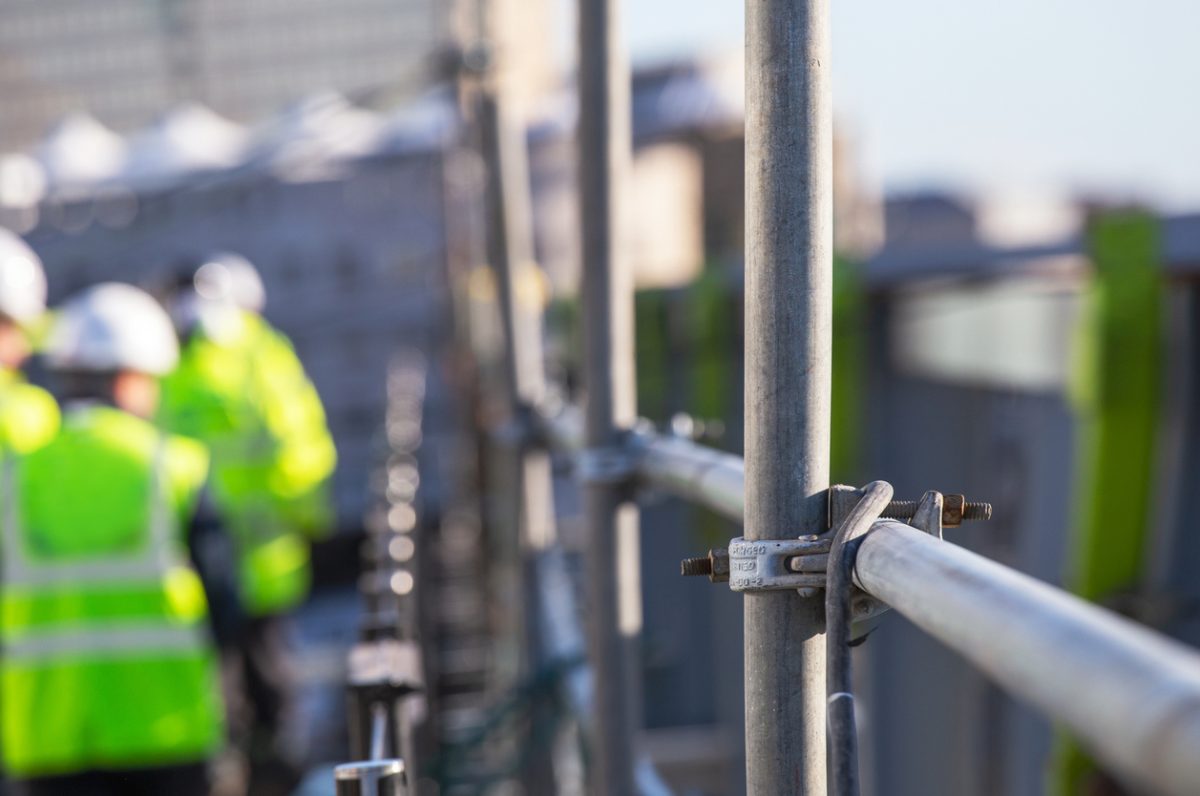Scaffolding Health and Safety: Your Complete Guide to UK Regulations and Compliance
Scaffolding health and safety remains one of the most critical concerns in the UK construction industry, where falls from height continue to be the leading cause of workplace injuries and fatalities. With proper implementation of safety regulations and best practices, construction companies can create secure working environments that protect workers while avoiding costly incidents and legal complications.
Understanding UK Scaffolding Health and Safety Regulations
The foundation of scaffolding health and safety in the UK rests on several key legislative frameworks that work together to create comprehensive protection standards.
The Work at Height Regulations 2005 (WAHR)
The Work at Height Regulations 2005 form the cornerstone of scaffolding health and safety legislation. These regulations mandate that all work at height must be properly planned, supervised, and executed safely. Crucially, any scaffolding platform exceeding 2 metres above ground level requires appropriate edge protection, including guardrails and toe boards.
Under WAHR, employers must conduct thorough risk assessments and select suitable equipment based on specific task requirements. This regulation ensures that scaffolding health and safety considerations are embedded into project planning from the outset.
Health and Safety at Work Act 1974
This foundational act creates a broader framework for workplace safety, placing legal duties on employers to protect their workforce and anyone affected by their operations. Within the context of scaffolding health and safety, this means ensuring adequate training for all scaffold users and maintaining safe working environments through comprehensive risk assessments.
Construction (Design and Management) Regulations 2015
The CDM regulations specifically address project management responsibilities, requiring those overseeing construction projects to ensure scaffolding is properly designed, planned, and risk-assessed before work begins. This regulation integrates scaffolding health and safety into the broader project management framework.

What Are the Key Components of Scaffolding Safety Compliance?
Effective scaffolding health and safety compliance involves multiple interconnected strategies that construction companies must implement systematically.
Competency and Professional Training
Certified Personnel Requirements Only trained professionals should handle scaffolding erection, alteration, dismantling, and inspection. The Construction Industry Scaffolders Record Scheme (CISRS) card serves as the industry standard for demonstrating competency in scaffolding health and safety practices.
Workers must complete comprehensive training that includes off-site instruction, on-site experience, health and safety testing, and practical skills assessments. Importantly, trainee scaffolders must always work under supervision from qualified personnel to maintain safety standards.
Ongoing Professional Development Scaffolding health and safety is an evolving field, requiring continuous education and training updates. Regular refresher sessions ensure workers stay current with new safety practices, updated standards, and emerging hazards.
Risk Assessment and Method Statements
Comprehensive risk assessments form the backbone of effective scaffolding health and safety management. Companies like Elite Scaffolding must identify potential hazards associated with working at heights and develop detailed method statements outlining step-by-step safety procedures.
These documents must align with legal requirements and include emergency procedures, ensuring that every aspect of scaffolding operations considers worker safety and regulatory compliance.
How Often Should Scaffolding Be Inspected for Safety?
Regular inspections are fundamental to maintaining scaffolding health and safety standards throughout a project’s duration.
Mandatory Inspection Schedule
Under BS EN 12811-1 Standard, scaffolding structures require inspection by competent persons at specific intervals:
- Before first use: Complete structural assessment
- Weekly inspections: Minimum once every 7 days during active use
- Post-event inspections: After severe weather or any incident that could compromise safety
These inspections must examine foundations, anchorage points, bracing systems, and guardrails to ensure continued structural integrity.
Documentation and Record Keeping
Effective scaffolding health and safety management requires meticulous record keeping. Companies must maintain detailed documentation of scaffold designs, inspection reports, and maintenance activities. These records must be readily available for review by safety inspectors and regulatory bodies.
Scaffold tagging systems using colour-coded indicators provide immediate visual confirmation of safety status, including inspection dates, inspector identification, and relevant safety notes.

What Safety Equipment Is Required for Scaffolding Work?
Proper safety equipment is essential for comprehensive scaffolding health and safety protection.
Fall Protection Systems
Guardrails and Barriers Guard rails must be strong, rigid, and properly fixed to capable structures. Specific height requirements include:
- Top guard rail minimum 950mm above platform edge
- Intermediate guard rails ensuring gaps don’t exceed 470mm
- Toe boards preventing rolling or kicking of objects
Personal Fall Arrest Systems When guardrails prove insufficient, personal fall arrest systems provide additional protection. These systems work in conjunction with other safety measures to create comprehensive fall prevention strategies.
Structural Safety Features
Bracing and Tying Systems Scaffolds require proper bracing and secure tying to permanent structures for stability. Facade bracing must be fitted at every frame to full height, particularly for loading bays and high-stress areas.
Load Capacity Management Each scaffold has specific maximum load capacities that must never be exceeded. General purpose scaffolds typically support maximum loads of 2 kN/m², and clear load capacity signs should be prominently displayed to prevent overloading.
Case Study: How Proper Scaffolding Safety Prevented a Major Accident
The Manchester Office Complex Project
In 2023, a major construction project in Manchester demonstrated the critical importance of scaffolding health and safety protocols. During renovation of a 12-storey office complex, severe weather conditions including 60mph winds struck the site during night hours.
The scaffolding contractor had implemented comprehensive safety measures including:
- Enhanced bracing systems exceeding minimum requirements
- Regular inspection schedules with documented reports
- Proper material securing and debris netting
- Emergency weather response procedures
When morning inspections revealed potential structural stress, the scaffolding health and safety protocols immediately triggered a comprehensive safety assessment. Minor adjustments were made before work resumed, preventing what could have been a catastrophic collapse.
Cost Impact Analysis:
- Additional safety measures cost: £15,000
- Potential accident costs avoided: £2.3 million
- Prevented injuries: Potentially 15-20 workers
- Avoided project delays: 6-8 weeks
This case demonstrates how investing in comprehensive scaffolding health and safety measures delivers substantial returns through accident prevention and project continuity.
Case Study: Regulatory Compliance Saves Construction Company
The Birmingham Housing Development
A Birmingham-based construction company faced potential prosecution when initial scaffolding installations failed to meet WAHR requirements. However, their proactive approach to scaffolding health and safety compliance transformed a potential crisis into a success story.
Immediate Actions Taken:
- Complete scaffolding assessment by certified inspectors
- Implementation of NASC TG20 guidance standards
- Comprehensive worker retraining program
- Enhanced inspection and documentation procedures
Results:
- Avoided £50,000 in potential fines
- Prevented 3-month project shutdown
- Improved worker confidence and productivity
- Achieved exemplary safety record for remainder of project
The company’s commitment to scaffolding health and safety not only prevented legal consequences but also enhanced their reputation, leading to additional contract opportunities worth over £500,000.

Advanced Scaffolding Health and Safety Strategies
Technology Integration
Modern scaffolding health and safety management increasingly incorporates advanced technologies:
Safety Monitoring Systems Real-time monitoring equipment can detect structural stress, weather impacts, and load distribution issues before they become dangerous.
Virtual Reality Training VR training programs provide realistic scaffolding scenarios without physical risks, allowing workers to practice emergency procedures and safety protocols in controlled environments.
Equipment Tracking Systems Digital tracking ensures scaffolding components are properly maintained, inspected, and replaced according to safety schedules.
Stakeholder Engagement
Effective scaffolding health and safety requires coordination among multiple stakeholders:
- Workers: Regular safety meetings and feedback sessions
- Clients: Clear communication about safety requirements and procedures
- Regulatory Bodies: Proactive engagement and compliance reporting
- Community: Addressing public safety concerns and maintaining positive relationships
Best Practices for Ongoing Safety Management
Continuous Improvement Protocols
Successful scaffolding health and safety programs incorporate continuous improvement through:
Regular Safety Audits Independent safety audits identify potential improvements and ensure ongoing compliance with evolving regulations.
Accident Analysis and Learning When incidents occur, comprehensive investigation processes identify root causes and prevent recurrence through updated procedures and training.
Industry Collaboration Participation in industry forums and safety organizations keeps companies current with best practices and emerging technologies.
Emergency Preparedness
Comprehensive scaffolding health and safety management includes robust emergency response procedures covering:
- Severe weather protocols
- Structural failure response
- Medical emergency procedures
- Evacuation and rescue operations
The Financial Impact of Scaffolding Health and Safety
Investing in comprehensive scaffolding health and safety measures delivers measurable financial benefits:
Direct Cost Savings:
- Reduced accident-related expenses
- Lower insurance premiums
- Avoided regulatory fines and prosecution costs
- Decreased project delays and associated costs
Indirect Benefits:
- Enhanced company reputation
- Improved worker morale and retention
- Increased client confidence and repeat business
- Competitive advantage in contract bidding
Research indicates that every £1 invested in scaffolding health and safety measures typically returns £3-5 in avoided costs and improved productivity.

Future Trends in Scaffolding Health and Safety
The scaffolding industry continues evolving with new technologies and approaches:
Digital Integration Internet of Things (IoT) sensors and data analytics will increasingly monitor scaffolding conditions in real-time, predicting maintenance needs and safety concerns before they become critical.
Regulatory Evolution UK safety regulations continue adapting to incorporate new technologies and reflect changing industry practices, requiring ongoing attention to compliance requirements.
Sustainability Integration Environmental considerations are increasingly integrated with safety requirements, promoting sustainable scaffolding practices that protect both workers and the environment.
Building a Culture of Scaffolding Safety Excellence
Effective scaffolding health and safety management requires more than regulatory compliance – it demands a comprehensive culture of safety excellence that permeates every aspect of construction operations. Companies that invest in proper training, equipment, and procedures not only protect their workforce but also achieve superior project outcomes and long-term business success.
The evidence is clear: proactive scaffolding health and safety measures prevent accidents, save lives, and deliver substantial financial returns. In an industry where the stakes are literally life and death, there is no acceptable alternative to comprehensive safety management.
Take Action and Book a Free Safety Consultation
Ready to transform your scaffolding health and safety practices? Don’t wait for an accident to highlight the importance of proper safety management. Contact Elite Scaffolding’s certified scaffolding safety experts today for a comprehensive assessment of your current practices and customized recommendations for improvement.
Our team of CISRS-certified professionals can help you implement industry-leading safety protocols, ensure regulatory compliance, and create the safest possible working environment for your projects. Protect your workers, your business, and your reputation with professional scaffolding health and safety solutions.
Call us today on 01423 789 312 or fill out the form below to schedule your safety consultation.

